Getting a new air conditioning system installed is a significant step towards enhancing your indoor comfort. Whether you’re planning to install a central AC system, ductless unit, or mini split system, understanding the process is crucial for making informed decisions. We strive to equip you with all the necessary information to ensure your AC installation goes smoothly and meets your cooling needs efficiently.
Preparing for Your AC Installation
Assessing Your Cooling Needs
Before embarking on the installation of a new AC unit, it’s essential to evaluate your cooling needs. Several factors play a role in this assessment, such as the size of your home or commercial space, the number of rooms, and the local climate. For instance, larger spaces require more powerful units to distribute cool air throughout the area evenly. Similarly, homes with multiple rooms may benefit from a system that can cool specific zones independently.
Consulting with our professionals can help you gauge these variables accurately. We often conduct a load calculation to ensure the recommended system will efficiently meet your cooling needs. This calculation takes into account the square footage, ceiling height, insulation quality, and window types within your property—factors that significantly impact cooling efficiency and overall comfort.
Choosing the Right Type of AC Unit
Once you have a clear understanding of your cooling requirements, the next step is choosing the appropriate type of AC unit. Here are the common types we typically recommend, along with their advantages:
- Central AC Systems: Ideal for cooling large spaces uniformly. These require ductwork and are excellent for maintaining consistent temperatures throughout a building.
- Ductless AC Systems: Perfect for homes without existing ductwork or for cooling specific zones. These systems offer flexibility and are less invasive to install.
- Mini Split AC Systems: A subtype of ductless systems, mini splits are highly efficient and can be used for both heating and cooling. They’re great for individualized room temperature control.
Each type of AC unit has unique features and benefits, making them suitable for various residential and commercial settings. Having our professionals guide you through this selection process ensures that you choose a unit that aligns perfectly with your needs and budget.
The AC Installation Process Explained
Steps Involved in Installing a Central AC System
Installing a central AC system involves several detailed steps to ensure optimal performance. Here’s a brief overview of what you can expect:
- Pre-Installation Assessment: Our technicians will inspect your existing ductwork, electrical systems, and the space designated for the new unit to determine if any upgrades or changes are necessary.
- Removing Older Units: If replacing an old system, we will handle the safe removal and disposal of the outdated unit.
- System Setup: This includes installing the new condenser unit outside your home and connecting it to the air handler inside. Proper placement is crucial for efficiency.
- Ductwork Adjustments: Necessary adjustments or repairs to the ductwork are made to ensure air flows efficiently throughout your space.
- Electrical Connections: We will make all the required electrical connections and ensure they meet local codes and safety standards.
- Testing and Calibration: Finally, our technicians will test the system, calibrate the thermostat, and check for any leaks or issues. This ensures your new central AC system operates smoothly right from the start.
Detailed Process for Ductless and Mini Split AC Installations
Ductless and mini-split AC installations are less invasive but require precision and expertise. Here’s an outline of the process:
- Choosing Mounting Locations: We determine the best locations for the indoor and outdoor units. Proper placement is key to achieving efficient airflow and cooling.
- Mounting the Indoor Unit: The indoor unit is securely mounted on the wall, ensuring there’s ample space for airflow. A small hole is drilled to connect the indoor unit to the outdoor unit.
- Installing the Outdoor Unit: Similar to the central AC setup, the outdoor unit is placed in a well-ventilated area to ensure efficient operation.
- Connecting Electrical Lines: We connect the indoor and outdoor units with electrical lines and a refrigeration line, which passes through the drilled hole.
- Vacuum and Charge System: Our professionals will vacuum the refrigeration lines to remove any contaminants and charge the system with the right amount of refrigerant.
- System Testing: Finally, we test the unit to ensure it’s functioning correctly. Any necessary adjustments are made to fine-tune performance.
By following these detailed steps, we ensure your AC system, be it central, ductless, or a mini split, is installed correctly and operates efficiently from day one.
Post-Installation Care and Maintenance
Importance of Regular AC Tune-Ups
Regular AC tune-ups are essential for maintaining the efficiency and longevity of your air conditioning system. Tune-ups can prevent minor issues from becoming major problems and ensure your unit operates at peak performance. During a typical AC tune-up, our professionals will check all components of the system, clean the coils, and inspect the refrigerant levels. They will also lubricate moving parts and tighten electrical connections, ensuring everything functions smoothly.
Consistent maintenance helps in improving air quality, reducing utility bills, and extending the lifespan of your unit. Neglecting regular tune-ups can lead to poorer performance, higher energy consumption, and unexpected breakdowns. By scheduling regular tune-ups with our technicians, you can keep your AC in excellent condition and avoid costly repairs.
Key Maintenance Tasks to Keep Your AC Running Efficiently
To keep your AC running efficiently, several key maintenance tasks should be performed regularly:
- Filter Replacement: Replace the air filter every one to three months to ensure proper airflow and reduce strain on the system.
- Cleaning Coils: Dirty coils can reduce efficiency, so it’s important to clean the evaporator and condenser coils annually.
- Inspecting Ductwork: Check for any leaks or blockages in the ducts to ensure air is distributed evenly throughout your space.
- Checking Thermostat Settings: Ensure your thermostat is working correctly and set to the optimal temperature for your comfort and energy savings.
- Clearing Debris: Keep the area around the outdoor unit free from debris, leaves, and grass to allow proper airflow.
By performing these tasks, you can ensure your AC unit operates efficiently, providing optimal cooling and cost savings.
When to Consider AC Replacement or Repair
Signs That Your AC Unit Needs Repair or Replacement
Knowing when to repair or replace your AC unit can save you from inconvenience and additional costs. Look out for these signs that may indicate your AC needs attention:
- Frequent Breakdowns: If your AC requires constant repairs, it could be more cost-effective to replace it.
- Increased Energy Bills: A sudden rise in energy bills can signal that your unit is not operating efficiently.
- Inconsistent Cooling: If some rooms are cooler than others, or if the system struggles to maintain the set temperature, a replacement might be necessary.
- Unusual Noises: Strange sounds such as grinding, squeaking, or rattling indicate an internal issue that needs professional inspection.
- Old Age: AC units typically last 10 to 15 years. If your system is within this range and experiencing issues, consider replacing it.
Our professionals can help you assess the condition of your unit and recommend the best course of action, whether that’s a repair or a full replacement.
Role of Emergency AC Repair and How We Can Help
Sometimes, AC issues arise unexpectedly, requiring immediate attention. Emergency AC repair services are crucial for restoring comfort promptly. Whether it’s a sweltering summer day or a critical business operation requiring a controlled climate, timely repairs are essential to avoid disruptions.
Our emergency AC repair services are designed to address urgent issues efficiently. Our technicians are equipped with the tools and expertise to diagnose and fix problems quickly. From refrigerant leaks to compressor failures, we handle a wide range of emergency repairs to get your system up and running swiftly.
Conclusion
Ensuring your AC system is properly installed, maintained, and periodically assessed for repair or replacement is key to maximizing its performance and longevity. At Oxbow Heating & Cooling, we are committed to providing top-quality AC services tailored to your unique needs. Whether you’re installing a new unit, scheduling regular maintenance, or requiring emergency repairs, our team of experienced professionals is here to help.
Don’t let AC issues disrupt your comfort. Contact us today to learn more about our reliable AC installation in Gresham, OR, and how we can assist you in maintaining the ideal indoor climate. At Oxbow Heating & Cooling, your comfort is our priority.





